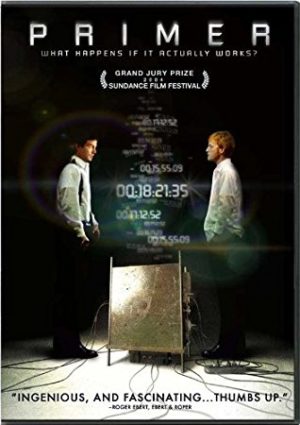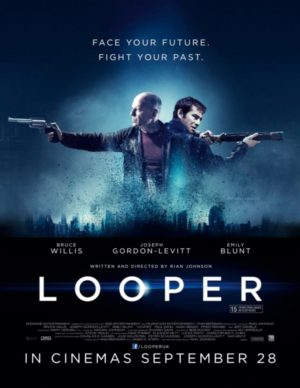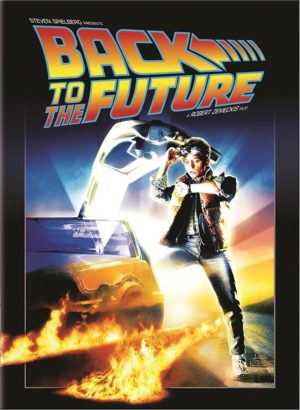Temper-testing, timeline-tampering trials and triumphs
The best and worst movie time travel logic

“Back to the Future” is one of many popular movies based on the concept of time travel. Of the time travel movies that exist today, some make sense, while others are packed with paradoxes.
If humans were to time travel, we would risk the destruction of our reality, the end of human civilization, paradoxes beyond comprehension, or even more horrifying: kissing our own mother. The following works of fiction represent some of the best and worst uses of time travel to ever appear on screen.
If you time travel, be it through a cave, a DeLorean, or a box, you should be wary of the consequences of your actions. If you stop your parents from falling in love, you may disappear, fade away slowly, or not be affected at all. Maybe you can’t stop your parents from meeting because the past is set in stone. Maybe, because all of history is unable to be affected, you have no free will. It all depends on what story you’re in.
For the purposes of this list, a time travel movie is “logical” if the act of time travelling does not alter the past’s or the present’s events. The time traveler can go back to the past, but his/her presence there is accounted for the first time the past happened. There is only one timeline, with no divergences or alternate versions of events. Nothing really manages to change, so the whole thing is self-consistent and makes sense.
An “illogical” time travel story allows for the events of the past to be rewritten entirely. Time travelers can alter the course of history, potentially threatening their own existence. There is often very little logic to the situation. If a time traveler goes to the past, these movies allow them to affect their past selves, maybe even stopping them from ever time travelling or being born. The result is a feedback loop of confusion, in which the time traveler shouldn’t be able to stop themselves from being born because that would stop them from stopping themselves from being born.
In the following works of fiction, time travel is used as the primary plot device, with each one treating the concept of time travel differently. Just for clarification, just because a movie has time travel related logical fallacies, that does not mean it is inherently a bad movie. All of the works on this list (with the exception of “Terminator: Genisys”) are worth watching.

Terminator: Genisys
In the original 1984 “Terminator,” a soldier from the future travels back in time to stop a Terminator from killing the future mother of the leader of the human resistance. Over three decades later, the kind-of sequel kind-of reboot movie “Terminator: Genisys” managed to be both awful and completely illogical. In this horrific rewrite of the original “Terminator,” Kyle Reese (played by Jai Courtney), our beloved robot killer, travels back in time to stop the Terminator (Arnold Schwarzenegger, obviously) from killing Sarah Connor (Emilia Clarke), only to discover that she has teamed up with another Terminator and is fully aware of the approaching robot apocalypse.
The movie’s primary villain is — and this is where everything goes off the rails — John Connor (Jason Clarke), Sarah and Kyle’s future son, who has become a terminator and traveled back in time to kill the only people who can stop him from kick-starting the apocalypse — his parents. There is no logical explanation as to how he is able to do this. The exact moment John reveals his villainous nature, Sarah and Kyle could have agreed to never have a child together, thus causing John to never exist. However, what actually happens is over two hours of screen time spent on a plot that is undone by basic cause-and-effect.
This one paradox reduces what was already a cheap cash grab to our best example of a terrible time travel plotline. In one continuous timeline, you shouldn’t be able to actively try to kill your parents. It’s too important of a detail to ignore.

Primer
In 2004, former engineer Shane Carruth wrote, directed, and starred in the independent time travel movie “Primer.” This film is famous for telling a complicated, thought-provoking story with complex, scientific dialogue and an incredibly low budget. In this film, two friends invent a machine that allows time to advance backward for anything inside it, allowing them to relive days of their lives. What sets this movie apart, besides its complexity, is the way the machine works: to travel back in time eight hours, you must sit in the machine for eight hours while time flows in reverse all around you.
The rules of “Primer” are revealed to be that if someone travels back in time and changes the course of events, resulting in a timeline where they do not travel back in time at all, they continue to exist. Essentially, imagine a version of “Back to the Future” where Marty stops his parents from falling in love but never fades away. He can continue to live in the timeline he has created, despite the fact that he should not be able to be there.
Due to the nature of the time machines in “Primer,” there is no journey into the past that lasts more than several days. When all is said and done, what started as a simple day-by-day routine where the two friends made money off of the stock market winds up being a beautiful mess of alternate timelines, multiple versions of the same people, and time travelling with a time machine inside a time machine.
If you follow the rules laid down by this movie, the sequence of events can be followed and understood. However, there is not the preferred logic we like to see, where one continuous timeline exists and the past cannot be rewritten. “Primer” makes its own logic, placing it low on our list despite being a fantastic film.

Looper
Rian Johnson’s take on the time travel genre also makes its own rules. In the universe of “Looper,” crime bosses of the future choose to eliminate people by sending them back thirty years in time, where specialized hit men called loopers kill them upon their arrival. As a result, there is nobody to be found in the future, and the crime boss cannot be charged with the crime.
Loopers, who really only have to be at the right place and the right time to eliminate their targets, are sometimes charged with killing their own future selves. When loopers do so, they get to retire, spend thirty years enjoying life, and ultimately get sent back in time to be killed by themselves.
Joseph Gordon-Levitt plays a humble looper named Joe. The older, tougher, hardened version of Joe is played by Bruce Willis. When the older Joe is sent back in time and young Joe fails to kill him, the two set off a deadly chain of events, with consequences for both the present and future. Older Joe wants to kill the young boy who will grow up to be the mob boss who sends him back in time. Young Joe just wants to kill Old Joe and retire.
Looper’s logic is this: if the young version of a looper is maimed or injured, the older version immediately gains a scar or missing limb matching the injury. Older loopers also will gain new memories as different events happen to the younger looper. The effect is very interesting and benefits the plot of the movie, but in a vacuum it makes little sense. For example, if a young looper loses a leg and their older counterpart falls to the ground with only one leg at that exact instant, how can we explain the time the older looper was on screen with both legs?

Back to the Future
The classic tale of Marty McFly (Michael J. Fox) and Dr. Emmett Brown (Christopher Lloyd) needs no introduction. When Marty travels back in time to the 1950s and accidentally disrupts the past’s events, he threatens his own existence. When the timeline is shifted toward a possible future where Marty is never born, he and his siblings begin to slowly fade from existence. Once Marty corrects history (while managing to shift time just enough to make his future parents cool), his siblings reappear.
The logical fallacy in “Back to the Future” is that if Marty was destined to correct the sequence of events, he would never have faded from the photograph. It’s a pretty picky thing to gripe about, especially when it comes to such a timeless movie, but we’re here to criticize their time travel logic, not be fair critics.
Additionally, the changed future where Marty’s parents are cool would definitely have had an effect on Marty’s upbringing, causing him to be a different person in most ways. Should his personality have changed after he changed the past? Wouldn’t such a dramatic change in the way Marty’s parents fell in love affect their future choices regarding marriage and parenthood?

The Terminator
The original “Terminator” movie, before it was unwritten in 2015, was an action-packed, logical time travel story for the ages. Kyle Reese (Michael Biehn) travels back in time to save Sarah Connor (Linda Hamilton) from the Terminator, the killing machine that disguises itself as a human. The original movie is far easier to understand than the reboot. Skynet sends the Terminator back in time to kill Sarah, but the human resistance is able to send back Kyle. Kyle and Sarah conceive the future John Connor before both Kyle and the Terminator are killed.
Although the past was “changed” by the presence of the Terminator and Kyle, this change ultimately causes the future that they come back in time from. Skynet is formed (as the “Terminator” sequel reveals) because curious scientists study the remains of the original Terminator. John Connor is able to exist and lead the humans because his father traveled back in time. It’s a perfect series of cause-and-effect events in one continuous timeline.
Dark
Last December, Netflix released the original series “Dark”, a German show about the small town of Winden, a place where people have the tendency to disappear. The time travel in “Dark” is the absolute best use of time travel in any fictional story. The timeline is set in stone, unable to be changed or rewritten. Characters in the show can travel to the distant past, but they have no real control over the course of history.

The residents of Winden are played by an astonishingly talented cast of German actors and actresses, including (but not limited to) Oliver Masucci, Louis Hofmann, Karoline Eichhorn, and Maja Schöne. The cast is extensive primarily because different actors must play the past, present, and future versions of the same people.
Every journey to the past, present, or future in “Dark” is not a change to the timeline, but was already accounted for in the present. If characters were to go back in time thirty years, they have no way of stopping their parents from falling in love because (in a way) it has already happened and cannot be rewritten.
As the show’s characters attempt to change the events of the past, they accidentally cause their future to occur the way it did. It allows for heavily philosophical discussions regarding free will and humankind’s ability to impact the future. The residents of Winden cannot stop the future from unfolding any more than we can, despite being able to time travel. This is what makes it the perfect time travel story to enjoy.
Travelling through time to visit the past may be impossible in reality, but that’s why we have fiction. These stories can fill us with wonder and allow us to imagine what might be. They also can serve as a warning to never meddle with the course of events, to focus on the future instead of the past.

